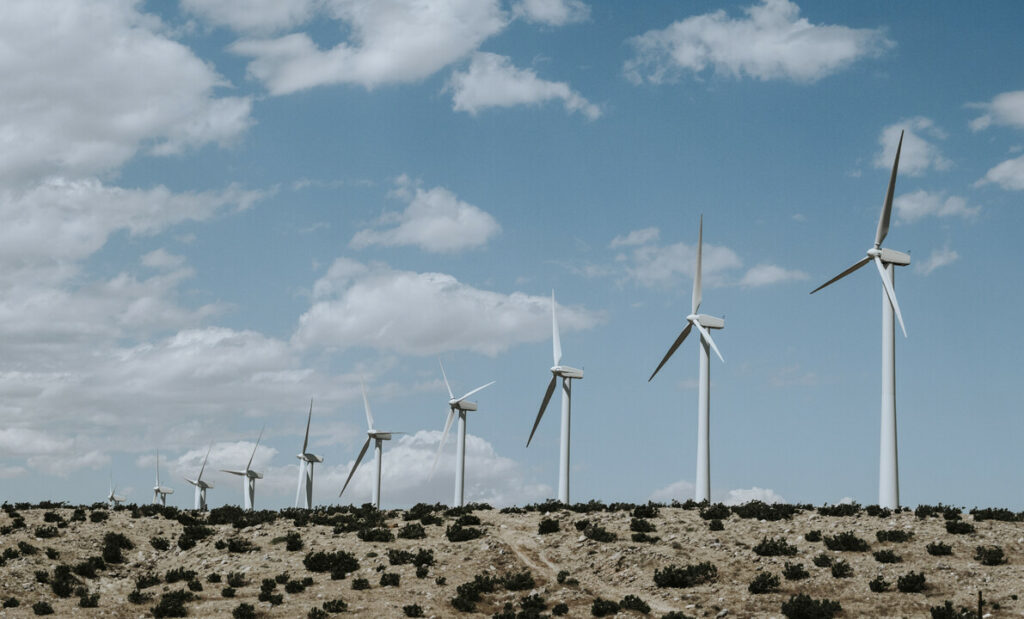
Energised by the sustainability agendas encapsulated within various national Vision 2030 frameworks, nations like the UAE are not merely adopting renewable energy; they are wholeheartedly embracing it. Wind power, with its vast untapped potential in the region, stands at the forefront of this renewable renaissance.
The expansive deserts and coastlines of the MENA region, with their abundant wind resources, are becoming the foundations upon which this new energy paradigm is being built. The burgeoning skylines of wind turbines, an emblem of progress, now complement the minarets and skyscrapers that have long defined the region’s topography.
At the heart of the energy discourse was the ADIPEC 2023, the region’s preeminent energy forum, where the shift towards decarbonisation was not just a topic of conversation but the central narrative. Here, global energy leaders and regional policymakers converged to forge a consensus on the way forward, with wind energy taking centre stage. Innovations in wind technology, strategies for grid integration, and commitments to sustainable development were among the key highlights, signalling the MENA region’s readiness to harness the winds of change.
Wind power is more than an alternative energy source within this dialogue; it is a cornerstone of the region’s decarbonisation strategy. Wind energy is pivotal in combatting climate change, improving air quality, and ensuring a resilient and sustainable energy supply for generations to come.
In the sphere of investment and infrastructure, the wind power sector is witnessing an influx of capital. Government and private sector ventures are synergising, epitomised by initiatives like the Masdar wind project in Egypt & the newly announced project in UAE. This ambitious project stands as a testament to the proactive steps being taken. It underscores the UAE’s commitment to pioneering renewable energy development both domestically and in the wider region.

A segment of the industry that has witnessed significant technological advancement is the maintenance of wind turbines. Drones are set to play a pivotal role in the wind energy sector by optimising inspection and maintenance operations. Traditional inspection methods are not only time-consuming and labour-intensive but also pose safety risks. Drones, however, can significantly mitigate these challenges by providing a safer, faster, and more thorough means of assessing the health of turbines.
Equipped with high-resolution cameras, thermal imaging, and advanced sensors, drones can detect issues that are invisible to the naked eye, such as micro-cracks or malfunctions in the blade structure. By conducting regular aerial inspections, these unmanned vehicles can collect data crucial for predictive maintenance. This approach not only prevents costly downtime but also extends the lifespan of the wind turbines, thereby enhancing the overall efficiency of wind farms.
Moreover, drones contribute to making wind energy a more feasible choice by reducing inspection and upkeep costs. These savings are critical for the competitiveness of wind power, as they can be redirected towards research and development, further driving down costs and fostering innovation in the sector.
The potential of drones goes beyond inspections. They are instrumental in the construction phase of wind projects, aiding in site surveys, logistics, and even in the actual building process through aerial monitoring. The ability to closely monitor every stage of a wind project ensures that construction adheres to the highest standards of quality and efficiency.

As the MENA region prepares to showcase its green credentials on the global stage at COP28, the integration of drone technology in wind energy underscores its readiness to embrace the latest innovations to meet its sustainability goals. The amalgamation of advanced renewable energy infrastructure with cutting-edge technologies like drones is setting a new benchmark for the global energy sector.
The synergy between the rise of wind power and drone technology in the MENA region exemplifies how traditional energy powerhouses are redefining their futures. The strategic coupling of the Masdar wind project’s ambition with the technological prowess demonstrated at forums like ADIPEC 2023 paints a picture of a region that is not just transitioning but leading the charge towards a sustainable, decarbonised world. With COP28 on the horizon, the UAE and its MENA counterparts are poised to unveil a new era of energy innovation, with the winds of change propelled by drones.